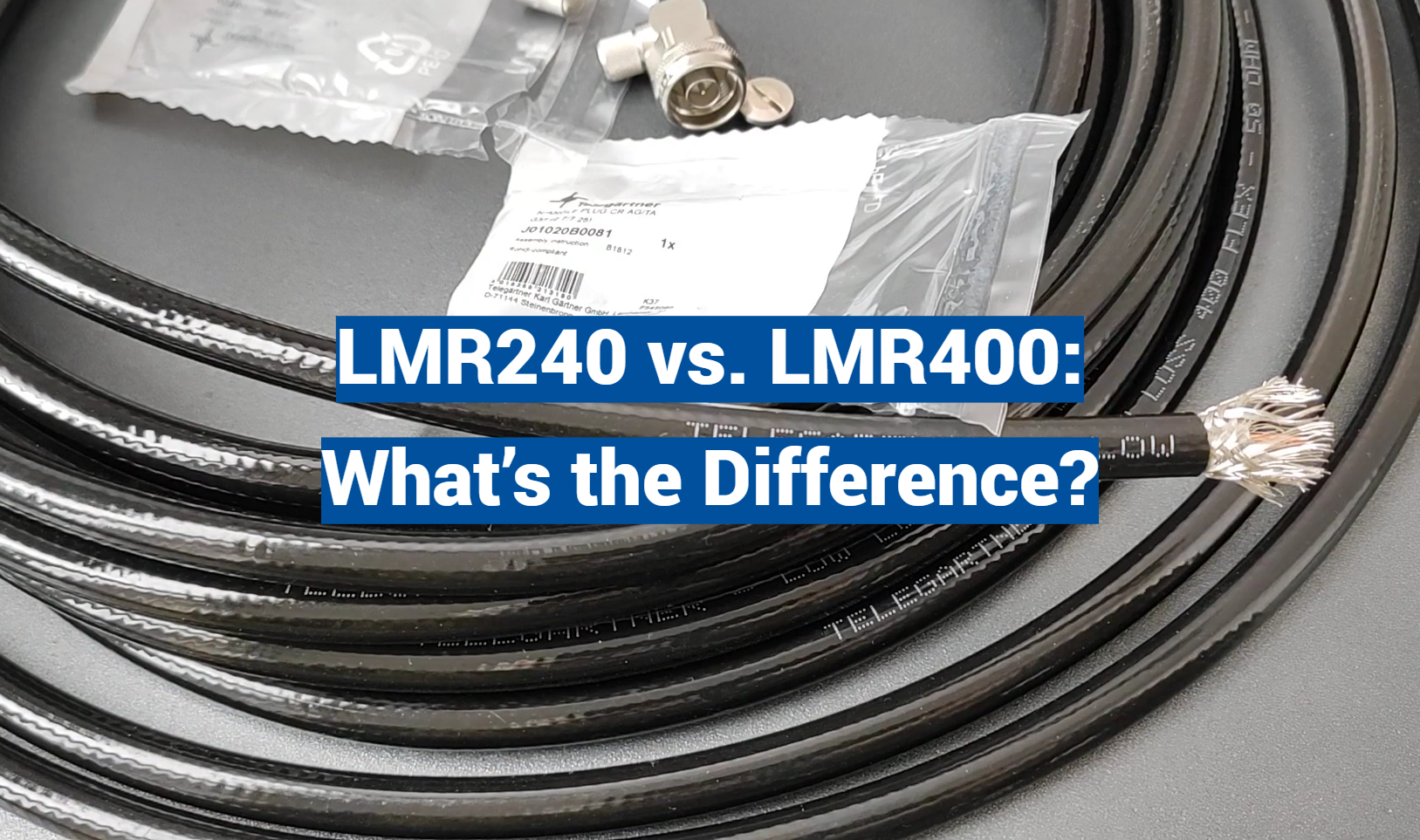Are you tired of a fuzzy TV signal or a dropped internet connection? It’s time to take a closer look at your coaxial cable. Choosing the right coaxial cable can make all the difference in the performance and reliability of your home entertainment system or internet connection. This in-depth article is going to explore the key differences between two popular options: LMR240 and LMR400. Whether you’re a tech enthusiast or just a frustrated binge-watcher, this is a must-read guide for anyone hoping to optimize their cable setup and enjoy a crystal-clear viewing experience. So, grab your cable cutters and let’s dive in!
What are coaxial cables and where are they used?
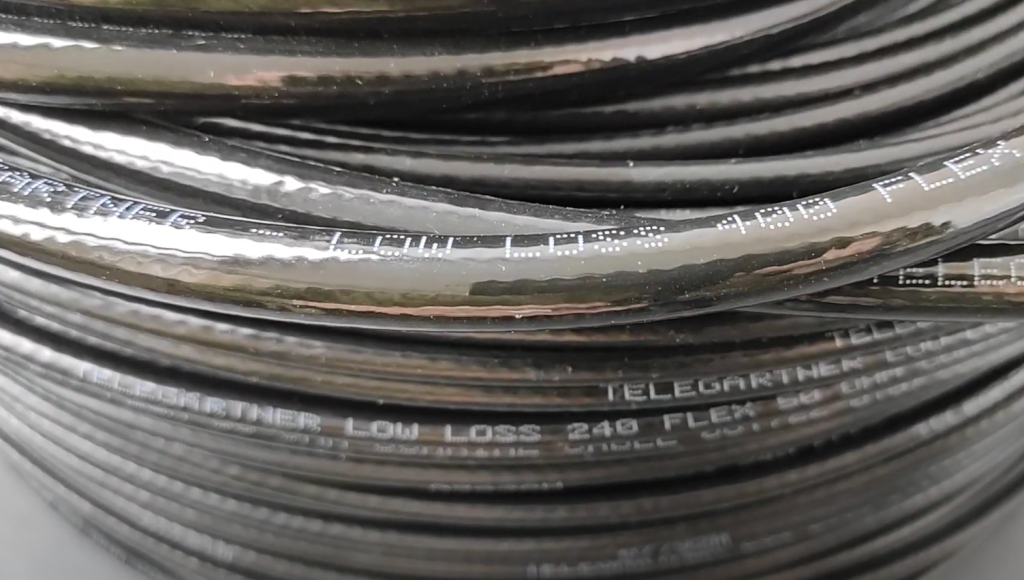
Coaxial cables are widely used in communication networks due to their ability to carry large amounts of data with minimal signal loss over long distances. They are also commonly used in the broadcast industry, especially TV studios and radio stations, where they allow for more reliable transmission of signals. Additionally, coaxial cables are often used in aerospace and military applications, where they provide a secure connection for data transmission.
In the home, coaxial cables play an important role in connecting various electronic devices. They are also useful for extending network connections to other rooms in the house, allowing users to access their home Wi-Fi from almost any location. Additionally, coaxial cables are essential for connecting audio systems, enabling users to enjoy high-quality sound.
Finally, coaxial cables can also be used in more advanced applications such as CCTV security systems and automotive wiring. In these cases, the cables are specially designed to handle higher voltages and withstand harsh environments. With so many uses, it’s no wonder that coaxial cables remain one of the most important types of cables in modern electronics.
These cables are generally quite durable and easy to install, but like any piece of equipment, they can become damaged over time. To keep coaxial cables functioning properly, it is important to inspect them regularly for signs of wear and tear. Whenever possible, use higher-quality products that feature robust shielding and insulation materials. This will help ensure that your coaxial cables last as long as possible and provide reliable performance for years to come.
In summary, coaxial cables are essential components of communication networks, broadcasting, home entertainment systems, and other applications. They are designed to deliver high-performance data transmission with minimal signal loss and interference over long distances. To keep these cables working reliably, it is important to inspect them regularly and invest in higher-quality products with better shielding and insulation materials. With the right coaxial cables, you can enjoy reliable performance from your electronic devices for years to come [1].
Advantages of Using Coaxial Cables
Coaxial cables are an essential part of modern networks due to their ability to carry high-speed data with minimal signal loss over long distances. Their many advantages include the following:
- High data speed– Coaxial cables can support data rates of up to 10Gbps, making them ideal for high-bandwidth applications like streaming video and online gaming.
- Low noise interference– Coaxial cables are designed to reject external electromagnetic interference, providing a more reliable signal with fewer disruptions.
- Security– Coaxial cables provide a secure connection that is difficult to access without the proper authorization. This makes them ideal for military and aerospace applications where data security is critical.
- Durability – The metal sheath of coaxial cables provides an extra layer of protection against damage from water and other elements.
- Flexibility– Coaxial cables are available in a variety of sizes and can be easily bent to fit into tight spaces.
These features make coaxial cables an ideal choice for many different types of applications, from home entertainment systems to military networks. With the right cable, you can enjoy reliable performance with minimal signal loss and interference over long distances.
Coaxial cables are also relatively affordable compared to other types of network cabling, making them an attractive option for many businesses and households. With the right cable selection, you can get the performance you need at a price that fits your budget.
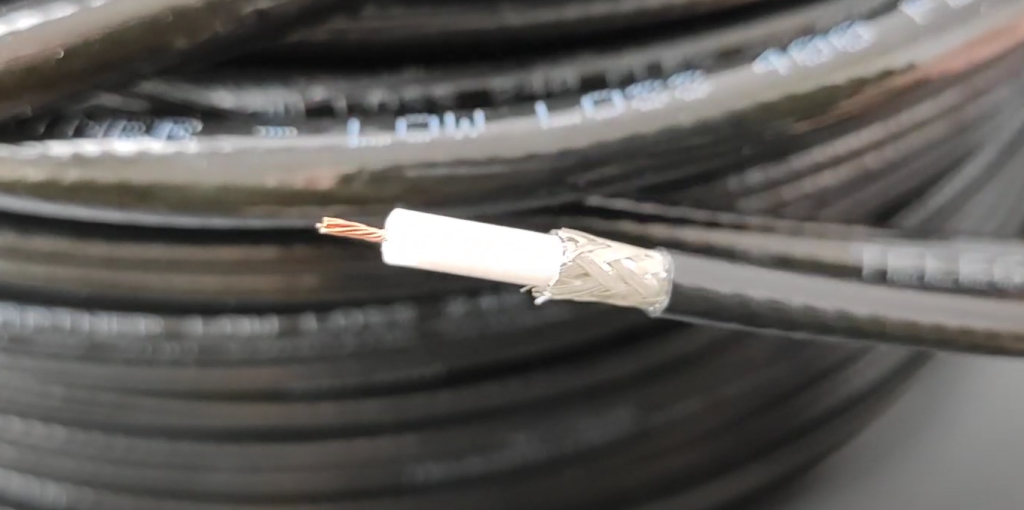
Overview of LMR400
LMR400 is a coaxial cable that is widely used in radio frequency (RF) transmission systems. It was developed by Times Microwave Systems and consists of polyethylene dielectric, double-shielding, stranded center conductor, and aluminum outer shielding. This cable has been designed to provide exceptional performance with low loss over a wide range of frequencies. It can be used in both indoor and outdoor applications, making it an ideal choice for a variety of RF transmission systems.
LMR400 is known for its superior electrical performance, durability, and flexibility compared to other types of coaxial cable. It offers excellent attenuation characteristics which allow it to be used in long cable runs without losing signal quality. Additionally, the use of stranded center conductors makes this cable highly resistant to breaks and kinks. This makes it an excellent choice for applications that require flexibility or outdoor usage. It also has a good shielding capability, which helps reduce interference from other nearby RF signals.
Overall, LMR400 is one of the most popular coaxial cables used in RF transmission systems due to its superior electrical performance and flexibility. It is available in a variety of sizes and configurations, making it an ideal choice for a wide range of applications. Furthermore, its tough construction and resistance to breaks make it an excellent choice for outdoor or long cable runs.
Overview of LMR-240
The LMR-240 is a low-loss coaxial cable designed to maximize signal integrity for data and communications applications. It features a wide temperature range of -40°C to +85°C, making it an ideal choice for outdoor installations in extreme climates. The cable also offers excellent electrical performance, with its outer conductor providing better shielding than other competing products on the market.
Additionally, its outer jacket is constructed from a low-smoke zero-halogen material to help reduce the risk of toxic fumes in the case of a fire. The LMR-240 is perfect for high-speed data transmission applications, such as Ethernet or cellular networks. With its superior performance and durability, it easily outperforms other coaxial cables available on the market.
The LMR-240 is available in a variety of lengths, allowing for easy installation and flexibility. It also comes with multiple connector options, including BNC, SMA, and N-Type connectors, making it compatible with virtually any system. This makes the LMR-240 an ideal choice for both indoor and outdoor applications. Additionally, its rugged design ensures reliable performance even in the most challenging environments.
The LMR-240 is also easy to install and maintain, making it a perfect choice for DIY enthusiasts. With its simple design, it can be set up quickly and easily without any special tools or expertise. Furthermore, its high-quality construction allows it to withstand harsh environmental conditions, ensuring long-term reliability.
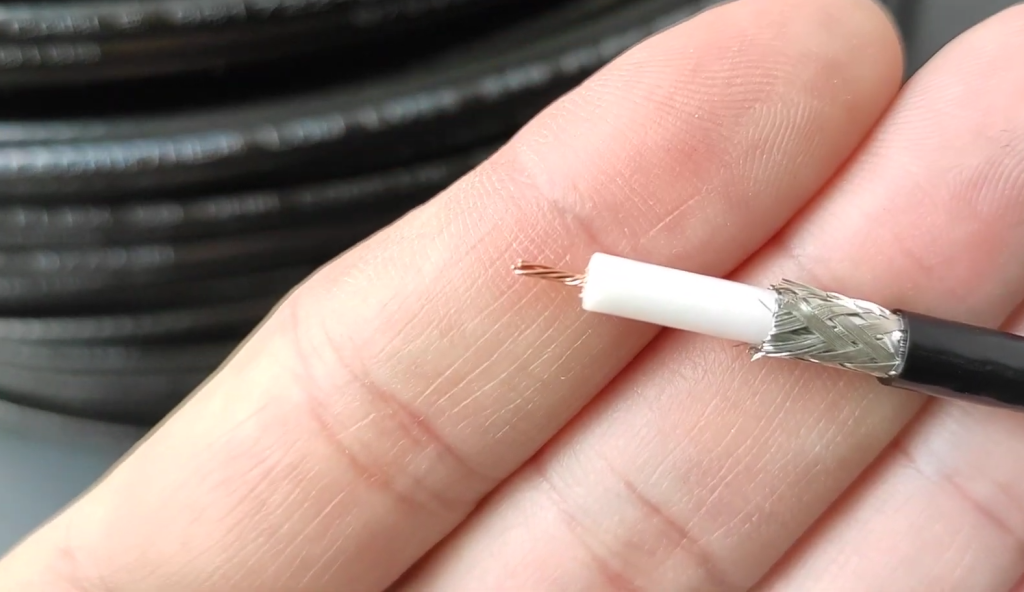
LMR240 VS. LMR400
Features
The major difference between the two is their size. The LMR240 has a smaller diameter than the LMR400, making it easier to install in tight spaces or around tight corners. Additionally, the LMR240 is also more flexible than its counterpart.
The other major difference between the two cables is their performance. The LMR400 has a higher signal quality and a lower loss rate than the LMR240. This makes it ideal for long-distance runs since it can transmit data over greater distances without losing any of its strength or clarity. However, this also makes the cable more expensive than the LMR240.
When it comes to installation, both cables are relatively easy to work with; however, the LMR400 is slightly harder to install due to its larger diameter. Additionally, the LMR400 requires more specialized tools and connectors since it has a higher signal quality.
Overall, both cables are suitable for many different applications – the choice really just depends on your specific needs. If you need a cable that is more flexible and easier to install, then the LMR240 would be the best choice. On the other hand, if you need one with a higher signal quality and can handle long-distance runs, then the LMR400 is the better option.
Specifications
The LMR240 and the LMR400 are both coaxial cables, meaning they are made up of an inner conductor surrounded by insulation and metal shielding.
The LMR240 has an impedance of 50 ohms and it is composed of a solid copper inner conductor with a diameter of 0.255 inches (6.5 mm). It is also composed of foam polyethylene dielectric with an outer diameter of 0.412 inches (10.5 mm) and is shielded by a copper tape braid with 95% coverage. The LMR240 has a maximum operating voltage of 500 volts and a maximum power rating of 250 watts at 70°C.
The LMR400, on the other hand, has an impedance of 50 ohms and is composed of a solid copper inner conductor with a diameter of 0.405 inches (10.3 mm). It is also composed of foam polyethylene dielectric with an outer diameter of 0.655 inches (16.6 mm) and is shielded by a copper tape braid with 95% coverage. The LMR400 has a maximum operating voltage of 750 volts and a maximum power rating of 500 watts at 70°C.

Datasheet
When deciding between the LMR240 and LMR400, it is important to compare their specs. The datasheet for both cables can be found online, which will provide detailed information about the following:
- Connectors
- Materials used
- Electrical characteristics
- Operating temperature range
Comparing these specs will help you determine which cable best fits your needs in terms of performance, flexibility, and cost. Additionally, the datasheet will provide information on installation requirements such as proper grounding and shielding for your specific application [2].
Differences Between LMR195, LMR240, LMR 400 Coaxial Cable
The popular coaxial cables that are most applicable for wireless applications include LMR195, LMR240 and LMR400. These cables are available with various types of outer jacket materials such as foam polyethylene, PVC or plenum-rated jackets depending on the application requirements. Although these three cable types have similar construction, they all have slight differences that make them more suitable for different applications.
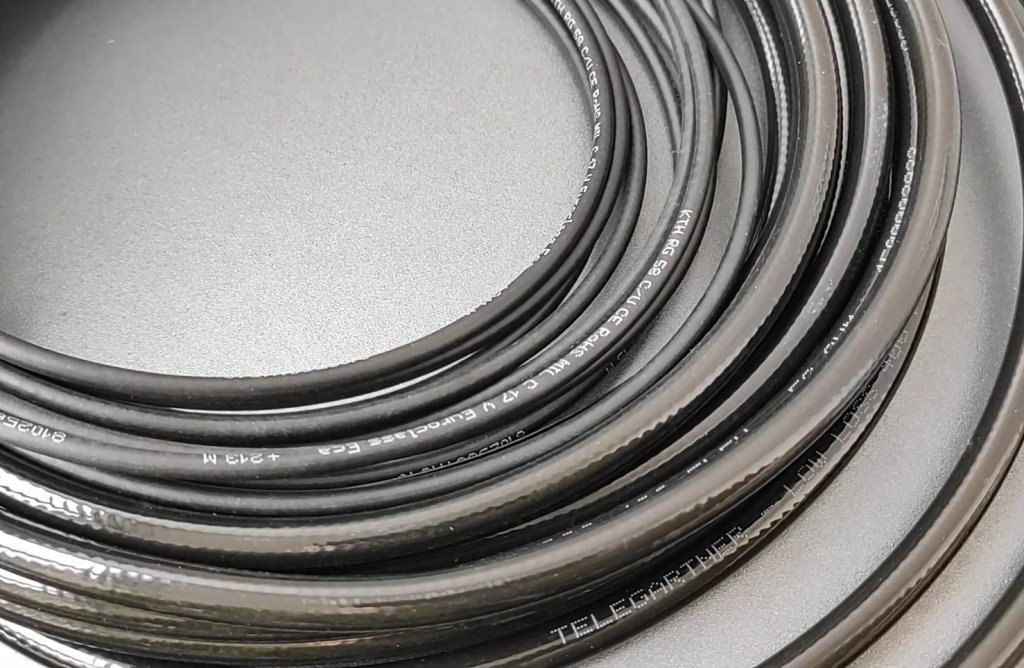
LMR195 is a low-loss, lightweight coaxial cable that allows for flexible installation and has an operating frequency range of up to 2.4 GHz. It is commonly used in Wi-Fi installations as it provides excellent performance for this application.
LMR240 is a medium-loss, low-weight RG-type coaxial cable that offers an operating frequency range of up to 3 GHz. It is most frequently used for short-range, medium-powered applications such as Wi-Fi and Bluetooth installations.
LMR400 has a high-loss, low-weight RG-type coaxial cable with an operating frequency range of up to 11 GHz and is suitable for long runs where lower attenuation loss is desired. It is often used for outdoor antenna installations where the length of the cable run needs to be long but with minimal signal loss.
In conclusion, all three types of coaxial cables have different characteristics that make them suitable for different applications. Depending on your application requirements, you can choose the right cable type to ensure optimal performance for your installation.
Additionally, make sure to use the appropriate connectors that are compatible with each cable type as this will help to ensure reliable performance. Finally, be sure to follow all safety guidelines when installing coaxial cables and never run them near electrical wires. Safety should always be a priority when handling any kind of cabling.
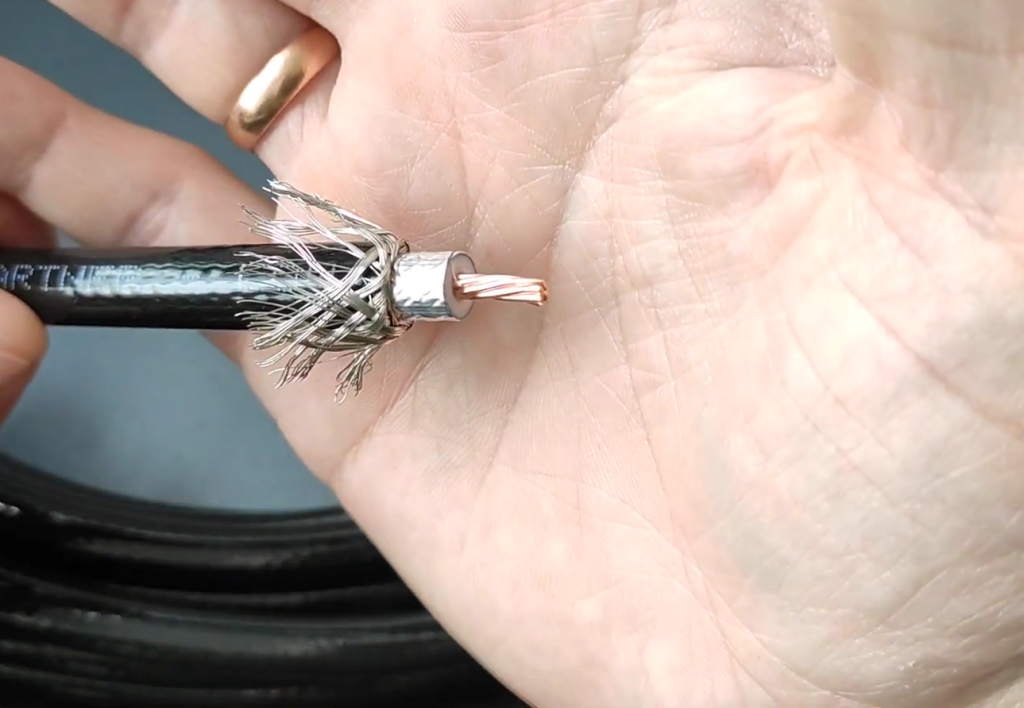
FAQ
What is the difference between LMR 200 and 400?
LMR 200 is a lower-grade coaxial cable, while LMR 400 is a higher-grade coaxial cable. The main differences between the two are in terms of their size and performance characteristics. LMR 200 is smaller than LMR 400, with a diameter of only 6 mm compared to 9.5 mm for the latter. It also has a lower signal-to-noise ratio, meaning that it is less efficient at transmitting data. On the other hand, LMR 400 has a higher signal-to-noise ratio and can transmit data more efficiently over longer distances. Additionally, LMR 400 also offers greater protection against electrical interference and noise.
What makes LMR 400 better than other coaxial cables?
The main advantage of using LMR 400 is that it can transmit data more efficiently over longer distances and with less signal loss due to its higher signal-to-noise ratio. Additionally, it has a larger diameter than other types of coaxial cable, which makes it better protected from electrical interference and noise. Finally, the tightly wound construction of LMR 400 makes it much more durable and reliable than other types of coaxial cable, ensuring that your data will remain secure.
How do I install LMR 400?
Installing LMR 400 is relatively straightforward. First, locate the source of the signal (e.g., a router or antenna) and attach one end of the cable to it. Then, measure the distance between the signal source and the destination (e.g., a computer or TV), allowing for enough slack to make turns if needed. Once you have measured the distance, cut the LMR 400 cable to size and attach it to both ends using crimp connectors. Finally, seal any exposed connections with electrical tape and verify that your data is being transmitted correctly.
What is the LMR-240 equivalent to?
The LMR-240 is typically considered to be the equivalent of an RG6 coax cable. There are, however, some differences between the two cables. While both have a maximum impedance of 75 ohms and a copper conductor, the LMR-240 has a smaller diameter than the RG6 (4.9 mm compared to 7 mm). Additionally, the LMR-240 is generally less expensive than the RG6, making it a more budget-friendly option.
Are there any other alternatives to LMR 400?
Yes, several alternatives to LMR 400 offer similar performance characteristics. RG8X coaxial cable is one such alternative and has become increasingly popular in recent years due to its greater flexibility and lighter weight compared to LMR 400. Additionally, Triax cables are also gaining popularity as an alternative to LMR 400 due to their higher signal capacity and greater resistance to interference. Ultimately, the best coaxial cable option for your needs will depend on factors such as cost, size, and performance requirements.
What is the difference between LMR-240 and LMR 195?
The main difference between LMR-240 and LMR-195 is their size. LMR-240 has a smaller diameter than LMR 195 (4.9 mm compared to 6.6 mm), which makes it more suitable for tight spaces or places with limited clearance. Additionally, the construction of LMR-240 is also tighter than that of LMR 195, making it more durable and less susceptible to damage. In terms of performance, LMR-240 is capable of transmitting data over longer distances than LMR 195 due to its higher signal-to-noise ratio. However, it also has a slightly lower maximum frequency rating (up to 8 GHz compared to 10 GHz for LMR 195).
What is the best way to install LMR 240?
The best way to install LMR 240 is to first measure the distance between the source of the signal (e.g., a router or antenna) and the destination (e.g., a computer or TV). Once you have measured the distance, cut the cable to size and attach it to both ends using crimp connectors. Finally, seal any exposed connections with electrical tape and verify that your data is being transmitted correctly. Additionally, you should also make sure to leave enough slack in the cable so that it can be easily secured with zip ties or other fasteners. This will help ensure that your connections are secure and reliable.
What is better than LMR240?
It depends on the specific requirements of your application. For example, if you need a high-performance cable with superior resistance to electrical interference and noise, then Triax cables may be a better choice than LMR 240. Similarly, if you need a more cost-effective option that still offers good performance characteristics, then RG8X coaxial cable may be the best choice for you. Ultimately, the best coaxial cable option for your needs should be based on factors such as cost, size, and performance requirements.
What is the maximum frequency rating of LMR240?
The maximum frequency rating of LMR 240 is 8 GHz. This means that it can transmit data signals up to 8 GHz in frequency without any significant signal loss. Additionally, the tightly wound construction of LMR 240 also makes it more resistant to electrical interference and noise, thus ensuring that your data will remain secure.
Is there a waterproof version of LMR240?
Yes, there are waterproof versions of LMR 240 available on the market. These cables are typically constructed with an additional layer of insulation, such as rubber or PVC, to protect the conductor and ensure that your data will remain safe even when submerged in water. As such, waterproof LMR 240 cables are ideal for applications in which moisture or water may come into contact with the cable.
Conclusion Paragraph
So, LMR240 and LMR400 coaxial cables have both their advantages and disadvantages, each of which must be carefully considered when selecting a cable for the application in question. LMR240 cables are excellent for short-range applications due to their lightweight and smaller size but fail to provide the same level of signal quality as larger types such as LMR400. On the other hand, LMR400 coax cables are more capable of providing a clean signal over longer distances but come with the drawback of being heavier and more expensive. Ultimately, it’s important to consider all factors before selecting the right cable for an installation.
Useful Video: LMR400 Low-loss Cable vs Helium Miner Fiberglass Antenna LMR200 Cable
References:
- https://www.techtarget.com/searchnetworking/definition/coaxial-cable-illustrated
- https://www.utmel.com/components/lmr400-coaxial-cables-rf-50ohms-video-datasheet-features-and-applications?id=1855

